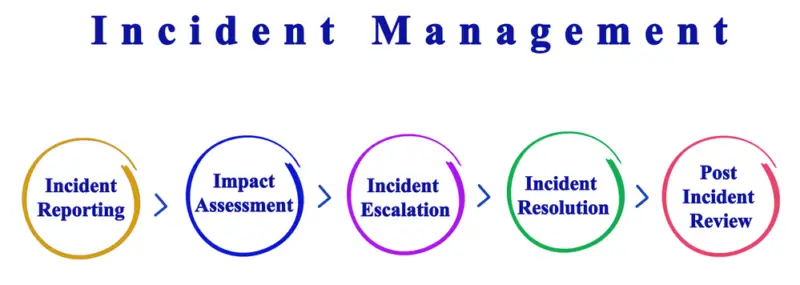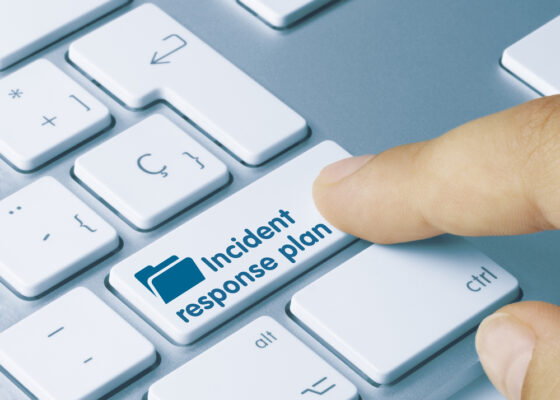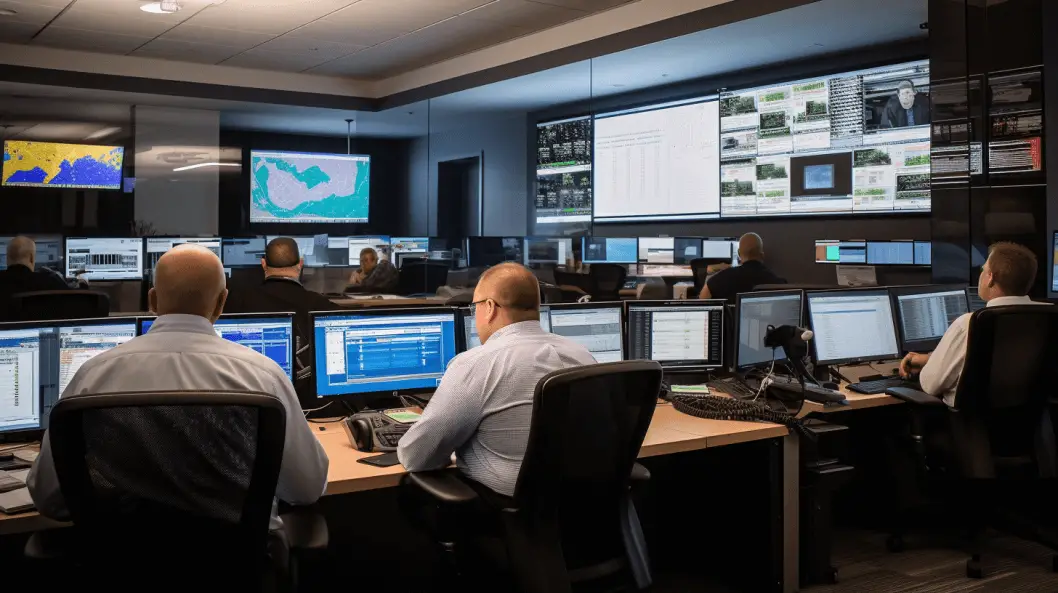Importance of effective incident management teams in professional risk management
In the dynamic and ever-evolving landscape of professional risk management, the ability to effectively respond to incidents is paramount to the success and resilience of an organization.
Incidents, be they cybersecurity breaches, natural disasters, or operational disruptions, can cause significant harm to an organization’s reputation, finances, and overall stability. Therefore, professional risk practitioners must establish effective incident management teams that can swiftly and efficiently handle such situations.
Incident management teams play a pivotal role in minimizing the impact of incidents and ensuring a prompt return to normal operations. These teams are composed of highly skilled individuals who possess a diverse range of expertise and are trained to handle a wide array of incidents.
Their primary objective is to coordinate and manage the response to any incident that may arise, employing a systematic and proactive approach to mitigate risks and restore normalcy within the organization.
A well-structured and competent incident management team is of utmost importance for several reasons. First and foremost, it allows for rapid response and containment of incidents, preventing them from escalating into major catastrophes.
By swiftly identifying and assessing the situation, the team can initiate appropriate measures to minimize the impact and prevent further harm. Additionally, an effective incident management team instills confidence within the organization and its stakeholders, demonstrating a proactive and competent approach to risk management.
Furthermore, an incident management team is the cornerstone for maintaining business continuity. By efficiently managing incidents and their aftermath, organizations can minimize downtime, reduce financial losses, and ensure the smooth operation of critical functions.
This safeguards the organization’s bottom line and enhances its reputation and credibility in the eyes of clients, investors, and the wider industry.
To build and maintain an effective incident management team, organizations must carefully consider key skills and qualities that team members should possess. These include but are not limited to solid communication, analytical thinking, problem-solving, and leadership abilities.
Additionally, continuous training and development programs are essential to keep the team abreast of emerging risks, evolving technologies, and industry best practices. Creating a culture of communication and collaboration within the team is also crucial, as it fosters a sense of unity and ensures seamless coordination during incident response.
In the following sections of this article, we will delve deeper into the world of incident management teams, exploring their definition and purpose, roles and responsibilities, and the key skills and qualities required for success.
We will also examine best practices in building and managing these teams and provide real-life case studies of organizations that have achieved notable success in incident management. Through these insights, professional risk practitioners will understand the vital role that effective incident management teams play in mitigating risks and safeguarding organizational resilience.
Now, let us embark on a journey of exploration and discovery, delving into the intricacies of incident management teams, their importance, and the strategies for building and optimizing their capabilities.
Together, we will uncover the secrets to effective incident management and equip ourselves with the knowledge and tools to navigate the complex world of professional risk management with confidence and expertise.

Understanding Incident Management Teams
Definition and Purpose
In professional risk management, incident management teams play a crucial role in ensuring a swift and effective response to unforeseen events.
An incident management team is a dedicated group of individuals who are specially trained to handle and mitigate incidents that may arise within an organization. These incidents can range from natural disasters and cyberattacks to workplace accidents and operational disruptions.
The primary purpose of an incident management team is to minimize the impact of incidents on an organization’s operations, reputation, and bottom line. By promptly and efficiently responding to incidents, these teams help to restore normalcy, reduce downtime, and safeguard the well-being of employees and stakeholders.
Roles and Responsibilities
An incident management team consists of professionals with diverse skill sets and expertise working together to address incidents in a coordinated manner. Each team member is assigned specific roles and responsibilities to ensure a comprehensive and efficient incident response.
- Team Leader: The team leader is responsible for overseeing the entire incident management process. They provide guidance, make critical decisions, and coordinate the activities of other team members.
- Communications Coordinator: Effective communication is vital during incidents. The communications coordinator takes charge of internal and external communication, keeping stakeholders informed and ensuring a consistent flow of information.
- Subject Matter Experts: These individuals possess specialized knowledge and skills for specific incidents. They provide expert advice, conduct investigations, and contribute to incident resolution.
- Operations Coordinator: The operations coordinator focuses on the logistical aspects of incident management. They coordinate resources, manage incident documentation, and ensure smooth coordination between teams and departments.
- Safety Officer: The safety officer’s primary responsibility is to ensure the safety and well-being of all personnel during an incident. They assess risks, implement safety protocols, and coordinate evacuation or emergency procedures if necessary.
Key Skills and Qualities
To excel in their roles, members of an incident management team must possess unique skills and qualities that enable them to handle high-pressure situations effectively. These skills include:
- Leadership: The ability to lead and make critical decisions under pressure is essential for the team leader and other key incident management team members.
- Communication: Strong communication skills are crucial for disseminating information, coordinating resources, and maintaining open lines of communication with stakeholders.
- Problem-Solving: Incident management teams must analyze complex situations, identify root causes, and devise effective solutions in real time.
- Flexibility: In the face of rapidly evolving incidents, team members must be adaptable and able to adjust their strategies and tactics accordingly.
- Collaboration: Effective collaboration and teamwork are essential for incident management teams to ensure seamless coordination and maximize the effectiveness of their efforts.
By combining these skills and qualities, incident management teams are well-equipped to respond to and resolve incidents efficiently, minimizing the impact on an organization’s operations and reputation.
Now that we have explored the definition, purpose, roles, responsibilities, and key skills of incident management teams, let’s delve into the next section of this article:
Building an Effective Incident Management Team. This section will explore the composition of incident management teams, training and development strategies, and communication and collaboration techniques that contribute to their effectiveness.
Continue reading: Building an Effective Incident Management Team
Building an Effective Incident Management Team
When it comes to professional risk management, building an effective incident management team is of paramount importance.
These teams play a crucial role in mitigating and resolving incidents, ensuring the smooth operation of an organization. By assembling a well-rounded team and providing them with the necessary training and tools, companies can bolster their incident response capabilities and minimize the impact of potential risks.
Team Composition
The composition of an incident management team should be carefully considered to ensure a diverse set of skills and expertise.
Diversity within the team allows for a broader perspective and a more comprehensive approach to incident management. Ideally, a team should consist of individuals with varying backgrounds, including technical specialists, subject matter experts, and cross-functional team members from different departments.
By incorporating a mix of skills, the incident management team can effectively handle various incidents, from cybersecurity breaches to natural disasters. Technical specialists can address issues related to systems and infrastructure, while subject matter experts can provide insights and guidance specific to their respective domains.
Cross-functional team members bring a holistic understanding of the organization’s operations, enabling them to coordinate efforts and facilitate communication across departments.
Training and Development
Comprehensive training and development programs are essential to ensure the team is equipped to handle incidents promptly and efficiently.
Ongoing training sessions should be conducted to keep team members up to date with the latest incident management practices and techniques. These sessions can cover various topics, such as incident response protocols, incident analysis, and incident documentation.
Furthermore, team members should be encouraged to pursue relevant certifications and participate in industry conferences and workshops.
This continuous professional development enhances the team’s expertise and fosters a culture of continuous improvement within the organization. By staying abreast of emerging trends and best practices, the incident management team can effectively adapt its strategies to address ever-evolving risks.
Communication and Collaboration
Effective communication and collaboration are the cornerstones of a successful incident management team. The team must establish clear communication channels and protocols to ensure seamless coordination during incidents. Regular meetings and briefings allow team members to share information, discuss ongoing incidents, and align their efforts.
In addition to regular meetings, leveraging collaboration tools can enhance the team’s efficiency. These tools facilitate real-time communication, enable document sharing, and streamline the incident management workflow.
From incident management systems to dedicated chat platforms, many technology solutions are available to support effective communication and collaboration within the team.
Moreover, fostering a culture of open communication and trust is vital. Encouraging team members to share their insights, concerns, and lessons learned from past incidents creates an environment conducive to learning and growth.
Documenting these lessons learned, organizations can develop a knowledge base as a valuable resource for future incidents.
In conclusion, building an effective incident management team requires careful consideration of team composition, training and development, and communication and collaboration.
Organizations can establish a robust incident management capability by assembling a team with diverse skills and backgrounds, providing them with ongoing training, and fostering open communication. With such a team in place, they can navigate through incidents with agility and confidence, minimizing the impact of potential risks on their operations.
Continue reading about the incident management process to gain deeper insights into the steps involved in effectively managing incidents.
Incident Management Team Best Practices
When managing incidents, professional risk practitioners understand the importance of adopting best practices for their incident management teams.
These practices enhance the effectiveness of response efforts and contribute to the overall success of risk management strategies. This section will explore four key best practices that can help organizations establish a robust incident management framework.
Establishing Clear Incident Response Protocols
One of the fundamental best practices for incident management teams is the establishment of clear incident response protocols. These protocols serve as a guide for team members, outlining the necessary steps to be taken when an incident occurs. Organizations can ensure a consistent and efficient response to any situation by defining specific procedures and workflows.
To create effective response protocols, it is crucial to identify potential incidents and their associated risks. This requires a comprehensive understanding of the organization’s operations, vulnerabilities, and priorities. By conducting thorough risk assessments, organizations can develop a detailed incident response plan that addresses various scenarios and aligns with industry standards and regulations.
Conducting Regular Drills and Exercises
Another essential best practice for incident management teams is regularly conducting drills and exercises. These activities simulate real-life incidents and provide team members with valuable opportunities to practice their skills and test the effectiveness of response plans.
In these proactive exercises, organizations can identify gaps in their processes, validate their incident management system, and enhance overall preparedness.
During these drills, teams should aim to replicate realistic scenarios and encourage active participation from all members. This allows for evaluating individual and collective performance, fostering collaboration and coordination among team members.
Additionally, conducting drills regularly ensures that team members remain up-to-date with the latest procedures and protocols, making them better equipped to handle actual incidents when they arise.
Documenting Lessons Learned
Learning from past experiences is a crucial aspect of continuous improvement for incident management teams. Therefore, documenting lessons learned is an essential best practice that enables organizations to capture valuable insights and apply them to future incident response efforts.
After every incident or drill, it is important for teams to conduct a thorough post-incident analysis. This includes identifying what went well, what could have been improved, and any unforeseen challenges encountered. By documenting these findings, organizations can create a knowledge repository as a reference for future incidents.
Furthermore, sharing these lessons learned with the wider organization promotes a culture of learning and continuous improvement. It allows other teams to benefit from the experiences of incident management teams and encourages the adoption of best practices throughout the organization.
Continual Improvement
The final best practice for incident management teams is to prioritize continual improvement. Incident management is an iterative process, and organizations must constantly strive to enhance their response capabilities.
This involves regularly reviewing and updating incident response protocols, conducting training sessions to address emerging risks, and staying informed about the latest incident management tools and technologies.
By embracing a mindset of continual improvement, organizations can adapt to the evolving threat landscape and ensure that their incident management teams remain at the forefront of risk mitigation efforts.
This proactive approach enhances the organization’s resilience and instills confidence in stakeholders, reassuring them that the organization is well-prepared to handle any incident that may arise.
In conclusion, by implementing these best practices, incident management teams can significantly strengthen their ability to respond to and mitigate risks.
These practices form the foundation for effective incident management, from establishing clear incident response protocols to conducting regular drills, documenting lessons learned, and embracing continual improvement.
As professional risk practitioners, it is essential to prioritize these best practices and strive for excellence in every aspect of incident response.

Case Studies: Successful Incident Management Teams
To better understand how effective incident management teams operate within professional risk management, let’s explore a few real-life examples.
These case studies will shed light on the strategies and practices employed by successful incident management teams, providing valuable insights for professional risk practitioners.
Example 1: XYZ Corporation
XYZ Corporation, a global leader in the technology sector, has established an exemplary incident management team that effectively mitigates risks and minimizes the impact of incidents. Their incident management process is streamlined and well-coordinated, ensuring a swift response to any potential disruptions.
By employing a robust incident management system, XYZ Corporation is equipped to handle a wide range of incidents, from cybersecurity breaches to natural disasters.
One key aspect of XYZ Corporation’s success is its emphasis on team composition. They have carefully selected individuals with diverse skill sets, allowing for comprehensive coverage of various incident management roles.
This ensures that each team member brings a unique perspective and expertise to the table, enhancing the team’s overall effectiveness.
In addition to meticulous team composition, XYZ Corporation places great importance on training and development. Team members undergo regular training sessions and workshops to update their skills with the latest industry trends and best practices.
This commitment to continuous improvement enhances the team’s capabilities and instills a culture of proactive incident management within the organization.
Example 2: ABC Bank
ABC Bank, a prominent financial institution, has established a highly efficient incident management team that excels in handling complex financial risks.
Their incident management workflow is characterized by clear protocols and swift decision-making, allowing them to navigate challenging situations easily and precisely.
One key practice that sets ABC Bank apart is its emphasis on communication and collaboration. The incident management team maintains open lines of communication with various stakeholders, including senior management, department heads, and external partners.
This ensures that relevant information is shared promptly, enabling the team to make informed decisions and take necessary actions in a timely manner.
ABC Bank also recognizes the importance of conducting regular drills and exercises to test its incident response capabilities. By simulating potential scenarios, the team can identify any gaps or areas for improvement in their incident management process.
Lessons learned from these exercises are documented and used to refine their incident management protocols, further strengthening their ability to handle future incidents efficiently.
Example 3: DEF Hospital
DEF Hospital, a leading healthcare institution, has established a robust incident management team to address the unique challenges in the healthcare sector. Their incident management tools and systems are specifically tailored to handle medical emergencies, ensuring the well-being of patients and staff alike.
One of the best practices implemented by DEF Hospital is the establishment of clear incident response protocols. These protocols outline the steps to take during various emergencies, providing a structured framework for the incident management team.
This clarity of process enables the team to respond swiftly and effectively, minimizing the potential impact of incidents on patient care.
Furthermore, DEF Hospital places great emphasis on continual improvement. They actively document lessons learned from each incident and use these insights to enhance their incident management strategies.
This commitment to learning from past experiences allows DEF Hospital to adapt and evolve, ensuring its incident management team remains at the forefront of healthcare risk mitigation.
By examining these case studies, professional risk practitioners can gain valuable knowledge and inspiration to enhance their own incident management teams.
These real-world examples demonstrate the importance of effective team composition, training and development, clear protocols, regular drills, and continual improvement. Incorporating these best practices can empower professional risk practitioners to navigate the ever-changing landscape of incidents and emerge stronger in adversity.
Continue reading about the incident management process, incident management system, incident management tools, incident management workflow, and significant incident management for further insights into effective incident management strategies.

Conclusion
Effective incident management teams are an indispensable asset in the ever-evolving landscape of professional risk management. They form the backbone of any organization’s response to unforeseen events and play a critical role in minimizing incidents’ impact on operations and reputation.
Throughout this article, we have explored these teams’ importance, definition, purpose, and key skills and qualities required for success. We have also discussed the building blocks of an effective incident management team, including team composition, training and development, and communication and collaboration.
To ensure optimal performance, incident management teams should adhere to best practices. This involves establishing clear incident response protocols that outline the steps to be taken in various scenarios. Regular drills and exercises should also be conducted to simulate real-life situations and hone the team’s capabilities. By documenting lessons learned from past incidents, organizations can continually improve their incident management processes and prevent future occurrences.
The article also examined case studies of successful incident management teams, such as XYZ Corporation, ABC Bank, and DEF Hospital. These examples serve as real-world evidence of the effectiveness of well-structured and well-trained incident management teams. By studying their approaches and strategies, risk practitioners can gain valuable insights and apply them to their own organizations.
In conclusion, a well-functioning incident management team is crucial to any professional risk management framework. By understanding the importance of these teams, building them with care, and implementing best practices, organizations can enhance their ability to respond to incidents swiftly and effectively.
With the right team in place, equipped with the necessary skills, and supported by robust incident management processes, organizations can mitigate risks, protect assets, and maintain their reputation in the face of adversity.
For more information on incident management, please refer to our articles on the incident management process, incident management system, incident management tools, incident management workflow, and major incident management.

Chris Ekai is a Risk Management expert with over 10 years of experience in the field. He has a Master’s(MSc) degree in Risk Management from University of Portsmouth and is a CPA and Finance professional. He currently works as a Content Manager at Risk Publishing, writing about Enterprise Risk Management, Business Continuity Management and Project Management.

